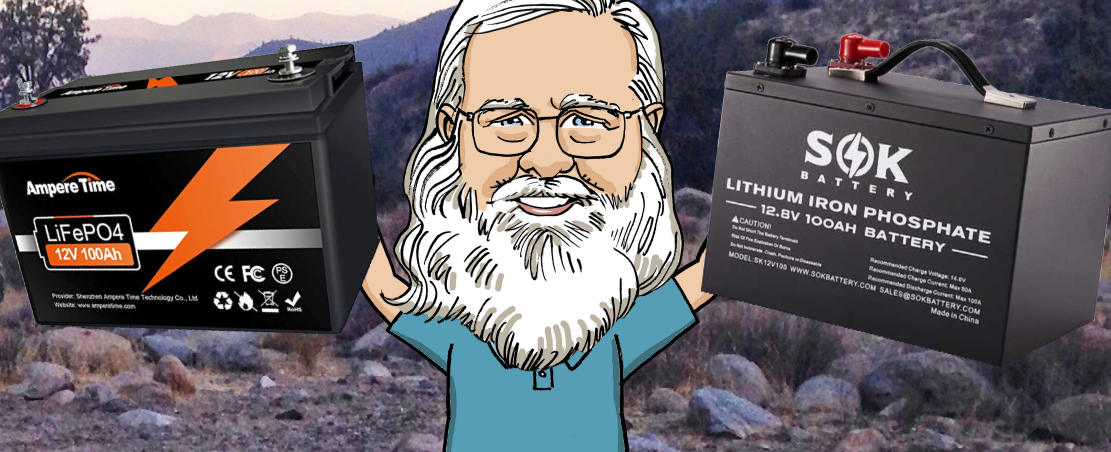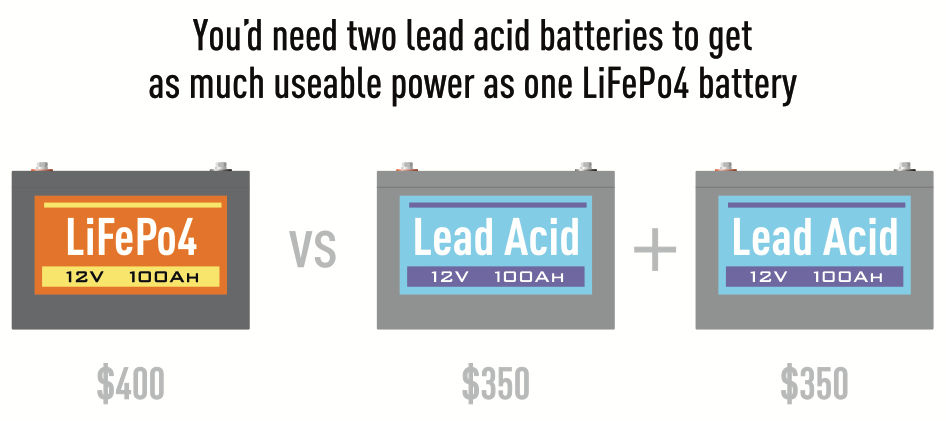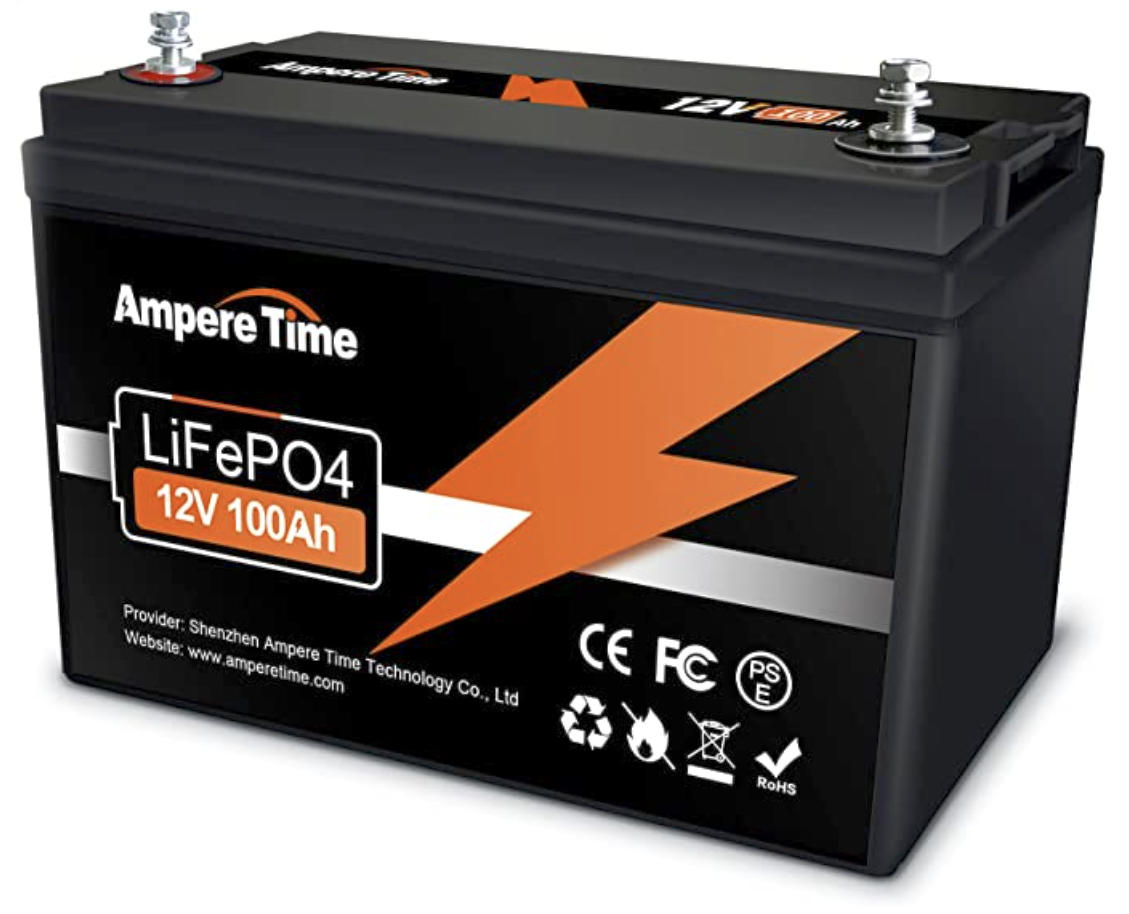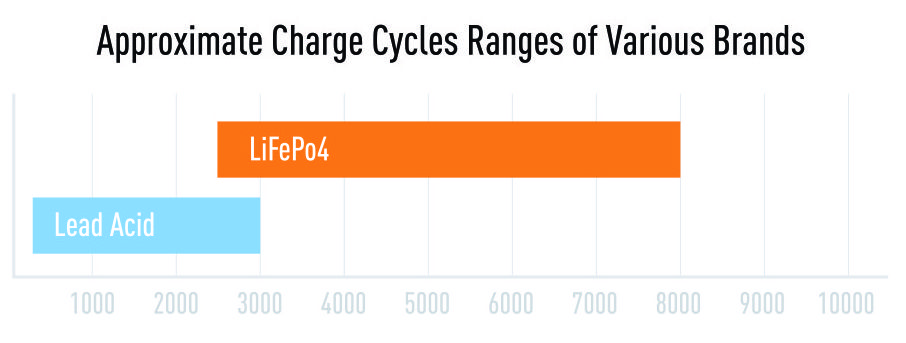
WE’RE IN THE MIDDLE OF A TRANSITION from good old lead acid batteries to lithium batteries. We like lithium batteries — specifically Lithium-Iron-Phosphate-4 batteries (LiFePo4) — because we can use nearly all of their capacity, as opposed being able to use only half of a lead acid battery’s capacity without ruining it.

Inside a LiFePo4 battery are several cells managed by a Battery Management System (BMS) that protects it from overcharge, over-discharge, overcurrent, and short circuiting. Better LiFePo4 batteries have at least one temperature sensor. This is important because LiFePo4 can be damaged if you try to charge them at freezing temperatures. When it’s too cold, the sensors trigger the BMS to block charging until things warm up. Higher end LiFePo4 batteries have built-in heaters that are also triggered by the temperature sensors. Some LiFePo4 batteries even have Bluetooth for monitoring your battery’s status.

These extra components are part of the reason LiFePo4 batteries have been much more expensive than lead acid batteries. But the price gap has been closing. Now low-end LiFePo4 batteries are only slightly more than top-end lead acid batteries. And when you consider you would need two lead acid batteries (and the extra cabling to connect them) in order to get as much useable power as one LiFePo4 battery of the same voltage and Amp-hour rating, LiFePo4 is a bargain.

For example, look at this 100Ah Ampere Time 12V battery. It’s a little less than $400 at the time this was written. Meanwhile, a sealed 100Ah, 12V, lead acid battery from a reputable manufacturer currently runs about $350 — but you’d need two of them.

Okay, but it a $400 LiFePo4 battery any good? Well, according to off-grid power guru Will Prowse, who tests batteries and cuts them open to see how they’re made, the Ampere Time uses quality components that are assembled very well. At this price you don’t get Bluetooth or a heater, although Ampere Time offers one that does for a few more bucks. Ampere Time provides a 5-year battery replacement warranty.

If your budget allows, you could step up to something like this $570 SOK battery. Will Prowse says it’s built just as well as much higher priced LiFePo4 batteries while including a heater and Bluetooth. Plus, if you’re the type who likes to tinker, the case opens by removing a few screws. SOKs are rated for 4,000 to 8,000 charge cycles and are warrantied for 7 years. However, at the time this was written, this model is out of stock. A lot of people have wanted them.
Go with the old or the new?
Ten years or so ago there was the debate between the flooded lead acid battery fans and the proponents of sealed absorbed glass mat (AGM) lead acid batteries. Both sides had their valid reasons. Now the debate (or at least the decision) is between AGM and LiFePo4. Bob equipped his converted ambulance with LiFePo4 batteries. I recently replaced my eight-year-old AGM batteries with new AGMs because of my budget and because of familiarity.

Entry level or spend the extra?
The Number 1 consideration for all big-ticket nomadic equipment is budget. Don’t spend more than you can afford. It’s better to have merely adequate gear and extra cash in your pocket. Fortunately, if you really want a LiFePo4 battery, there are good ones at prices way below what we had to pay just last year.
What are your wants, needs, or considerations regarding batteries? Share your opinions in the comments.

I think I heard Bob say that the prices are as low as they are going to be before they go back up . Or it was Will . Anyway I decided to make the jump and bought the Ampere Time battery with the separate 10Amp charger. Being a long weekend camper i charge it back to full and use a portable solar panel to keep it going for the frig i use now. No more ice ! Except for drinks of course. Unless you buy a large enough portable battery you will not have quite enough power each day to be sure.
Excellent information on a vendor that apparently is providing a good product at a good price. Plug and play usually cost much more. The long term serviceability and upper technology is attractive to me when considering a purchase like this.
As a thrifty DIY type I built my own 180 amp hours set up over the course of many months and spending much more than the above mentioned prices. I’m glad to have something that should give many years of service.
Tom over on the HOBOTECH channel on Youtube did a review of the Ampere Time 100ah LiFePo battery just recently and liked it. Go over to Youtibe and seach for the channel name to see it. Bonus: he has discount codes for that vendor avail (limited time, I’m sure)
what about battlebornbatteries.com
The topic is budget-friendly LiFePo4 batteries. Battle Born are excellent, but they’re about $875 each.